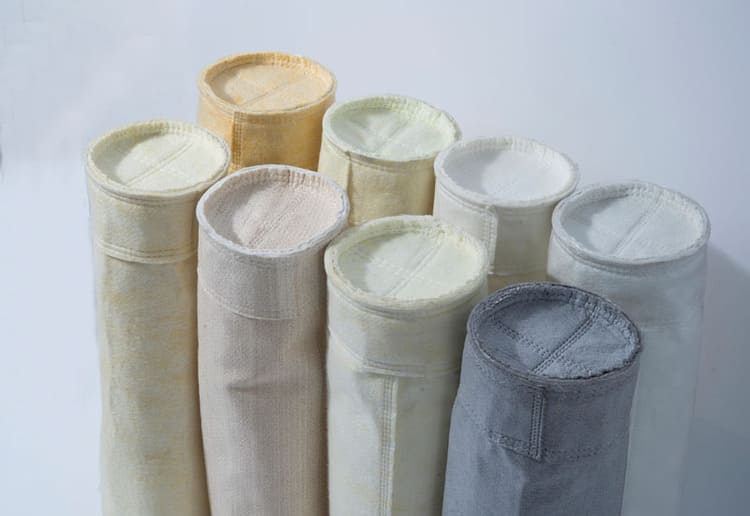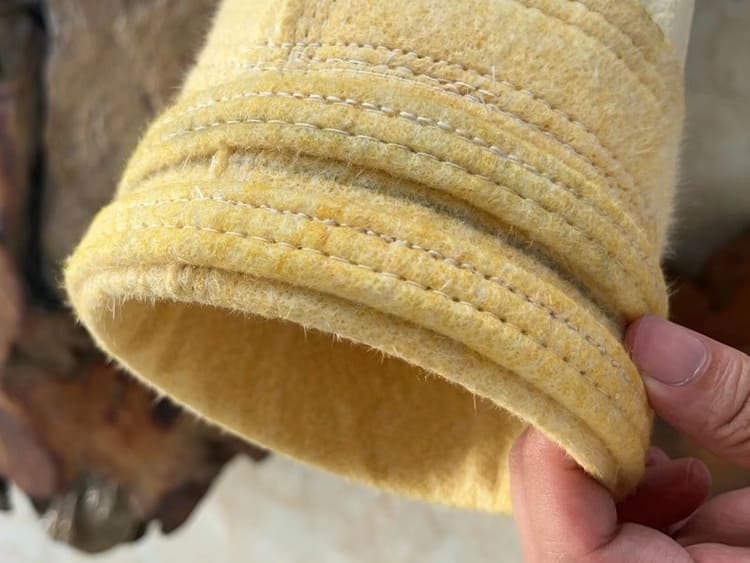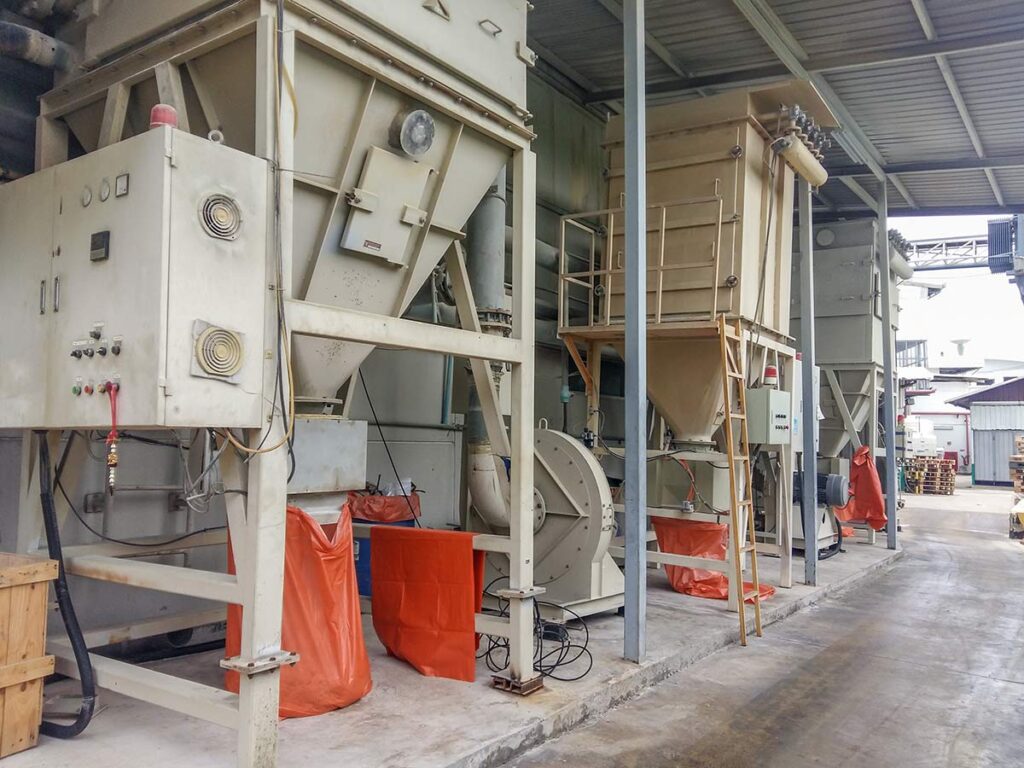Introduction

Filter bags are a type of filtration equipment used in many different industrial processes. They are made from a variety of materials and come in a wide range of sizes and configurations, allowing them to be tailored to the specific needs of any given application. The lifespan and performance of filter bags depend on several factors, including the type of material used, the operating conditions of the process, and the type of pollutants that need to be filtered.
In general, filter bags are designed for a specific use and the lifespan of each filter bag will depend on its intended use. In this article, we will discuss the typical lifespan of filter bags and how it can be extended.
The lifespan of filter bags
The lasting period of filter bags can vary based on a number of factors, including the type of filter media, the type of dust being collected, the operating conditions of the baghouse, and the level of maintenance performed on the bags.
Typically, filter bags made of synthetic fibers such as polypropylene or polyester, have a long-lasting period compared to those made of natural fibers such as cotton or wool. This is because synthetic fibers are more resistant to abrasion and heat and are less likely to degrade over time.
The type of dust being collected can also affect the lasting period of the filter bags. Bags that are collecting abrasive or corrosive dust will have a shorter lasting period compared to bags collecting non-abrasive or non-corrosive dust.
The operating conditions of the baghouse, such as the temperature and humidity, can also affect the lasting period of the filter bags. High temperatures and humidity can cause the filter media to degrade faster, while low temperatures can cause the filter media to become brittle and more likely to tear.
Lastly, the level of maintenance performed on the filter bags can also affect their lasting period. Regular cleaning and replacement of worn or damaged bags can prolong the life of the filter bags.
It is important to regularly check the quality of the filter bags and replace them when they become worn or damaged to ensure optimal performance of the baghouse and to avoid any emissions violations. It is also important to have a monitoring and maintenance schedule based on the baghouse’s conditions and to have a spare set of bags on hand for replacement.
How to detect the quality of baghouse filter bags
There are several ways to detect the quality of baghouse filter bags:
Visual Inspection

A filter bag visual inspection can be performed to check for any physical damage such as holes, tears, or abrasions on the surface of the bag. Visual inspection is a method used to detect the quality of baghouse filter bags by inspecting the surface of the bags for any physical damage. It is a simple and cost-effective method that can be performed by trained personnel and does not require any specialized equipment.
During the visual inspection, the bags are visually inspected for any holes, tears, or abrasions on the surface of the bag. These damages can be caused by a variety of factors such as abrasion from the dust particles, mechanical failure, or exposure to extreme temperatures.
The inspector should also look for any signs of dust or particulate matter accumulating on the bags or in the baghouse. This could indicate that the bags are not functioning properly or that the dust collection system is not working efficiently.
It is important to conduct visual inspections regularly to ensure that the filter bags are functioning properly and to detect any potential issues before they become serious problems. If a bag is found to be damaged or worn, it should be replaced as soon as possible to avoid any emissions violations.
It is also important to note that visual inspection should be done when the system is off, and bags should be clean, otherwise the dust accumulated on the bags can hide the damages.
Pressure Drop Test
A pressure drop test is a method used to detect the quality of baghouse filter bags by measuring the resistance of airflow through the bags. It measures the resistance of airflow through the bag, which can indicate the degree of clogging or fouling on the bag’s surface. The test measures the difference in pressure between the inlet and the outlet of the baghouse, and it can indicate the degree of clogging or fouling on the bag surface.
The pressure drop test is typically performed by measuring the pressure drop across the baghouse while the system is running under normal operating conditions. The pressure drop is typically measured using pressure transducers or manometers which are installed at the inlet and outlet of the baghouse. The difference in pressure between the inlet and the outlet is then used to calculate the pressure drop across the bags.
A higher pressure drop indicates that the bags are clogged or fouled, which can reduce the efficiency of the dust collection system. A lower pressure drop indicates that the bags are clean and functioning properly.
The pressure drop test can be performed as a continuous monitoring or as a periodic test, the test results can be used to determine when the bags need to be replaced.
It’s important to note that pressure drop alone should not be used to determine the filter bag condition and should be used in conjunction with other tests such as visual inspection and emissions testing to get a more complete picture of the baghouse filter bags’ condition.
Additionally, it’s important to note that pressure drop can also be affected by other factors such as air flow rate, temperature, humidity, and dust loading, so the test should be performed under consistent conditions to ensure accurate results.
Emissions Testing

Emissions testing is a method used to detect the quality of baghouse filter bags by measuring the amount of particulate matter that is escaping through the bags. It is a way to determine if the filter bags are worn or damaged and if they need to be replaced.
The test is typically performed by collecting a sample of the exhaust air from the baghouse and then measuring the concentration of particulate matter in the air using a particle counter or a gravimetric method. The sample can be collected using a probe or a sample port that is installed in the exhaust duct of the baghouse.
If the emissions are high, it could indicate that the bags are worn or damaged and that particulate matter is escaping through the bags. High emissions can also indicate that the dust collection system is not functioning properly, such as clogged or malfunctioning baghouse components.
Emissions testing should be performed regularly to ensure that the filter bags are functioning properly and to detect any potential issues before they become serious problems. The test results can be used to determine when the bags need to be replaced.
It’s important to note that emissions testing should be done under consistent conditions, such as temperature, humidity, and dust loading, to ensure accurate results. It should also be done during normal operating conditions, if possible when the system is running at its maximum capacity, to ensure that the worst-case scenario is captured.
Additionally, emissions testing should be done in compliance with local or federal regulations, to ensure that the results are comparable and accurate.
Scanning Electron Microscopy (SEM)
Scanning Electron Microscopy (SEM) is a method used to detect the quality of baghouse filter bags by examining the surface of the bags at a microscopic level. It can be used to detect any signs of wear or damage on the bags and can provide detailed information about the condition of the filter media.
During the SEM analysis, the bags are first cleaned to remove any dust or debris, and then a small sample of the bag is taken. The sample is then coated with a thin layer of conductive material, such as gold or palladium, to make it conductive for the electron beam.
The sample is then placed in the scanning electron microscope (SEM) where it is scanned with a beam of electrons. The electrons interact with the atoms in the sample, producing a signal that is used to create an image of the surface. The image can be used to detect any signs of wear or damage on the bags, such as holes, tears, or abrasion.
SEM can be used to examine the surface of the bags at a very high resolution and can provide detailed information about the condition of the filter media. It can be used to detect any signs of wear or damage on the bags, such as holes, tears, or abrasion.
You should note that SEM is a destructive method, which means that the sample is consumed during the analysis. It is typically used as a spot-check method rather than for continuous monitoring, and it is usually used as a complementary method to other testing methods such as visual inspection and pressure drop testing.
SEM is typically a laboratory-based analysis, and therefore it’s more time-consuming and costly than other methods, but it can provide very detailed information about the condition of the filter bags.
Dye Penetration Test

The Dye Penetration Test is a method used to detect the quality of baghouse filter bags by applying a dye to the surface of the bag and then observing if the dye penetrates through any holes or tears on the bag.
During the test, a small amount of dye is applied to the surface of the bag, usually with a spray bottle or a brush. The dye is then allowed to sit on the surface for a certain period of time, typically around 5-10 minutes. After that, the bag is inspected for any signs of dye penetration, which would indicate the presence of holes or tears in the bag.
The dye penetration test is a simple, non-destructive method that can be performed by trained personnel, and does not require any specialized equipment. It is typically used as a spot-check method rather than for continuous monitoring, and it can be performed alongside other testing methods such as visual inspection or pressure drop testing.
The dye used should be non-toxic, non-flammable, and easy to clean to avoid any hazards. Also, the dye should be chosen carefully, as some dyes can react with the filter media and cause discoloration or damage to the bags.
This method can only detect holes or tears that are on the surface of the bag and not those that are inside the bag structure. Therefore, it’s recommended to use this method in conjunction with other testing methods to get a more complete picture of the bag’s condition.
It is important to regularly check the quality of your filter bags to ensure optimal performance and avoid any emissions violations. If a bag is found to be damaged or worn, it should be replaced as soon as possible.
Conclusion

In conclusion, the lasting period for filter bags can vary depending on a variety of factors such as the type of filter media, the type of dust being collected, the operating conditions of the baghouse, and the level of maintenance performed on the bags. Synthetic fibers such as polypropylene or polyester have a longer lasting period compared to those made of natural fibers such as cotton or wool. Regular maintenance, proper operation, and proper selection of filter media can increase the lifespan of the filter bags.
Sofilt Filter bag is a high-quality solution for your baghouse filter needs. Sofilt Bag Filters are made of synthetic fibers such as polypropylene, which is known for its durability, resistance to heat and abrasion, and long lasting period. They are also designed to provide optimal performance and efficiency in various applications. With a wide range of options and sizes, Sofilt Bag Filters are a great choice for your baghouse filter needs. Contact us today to learn more.




